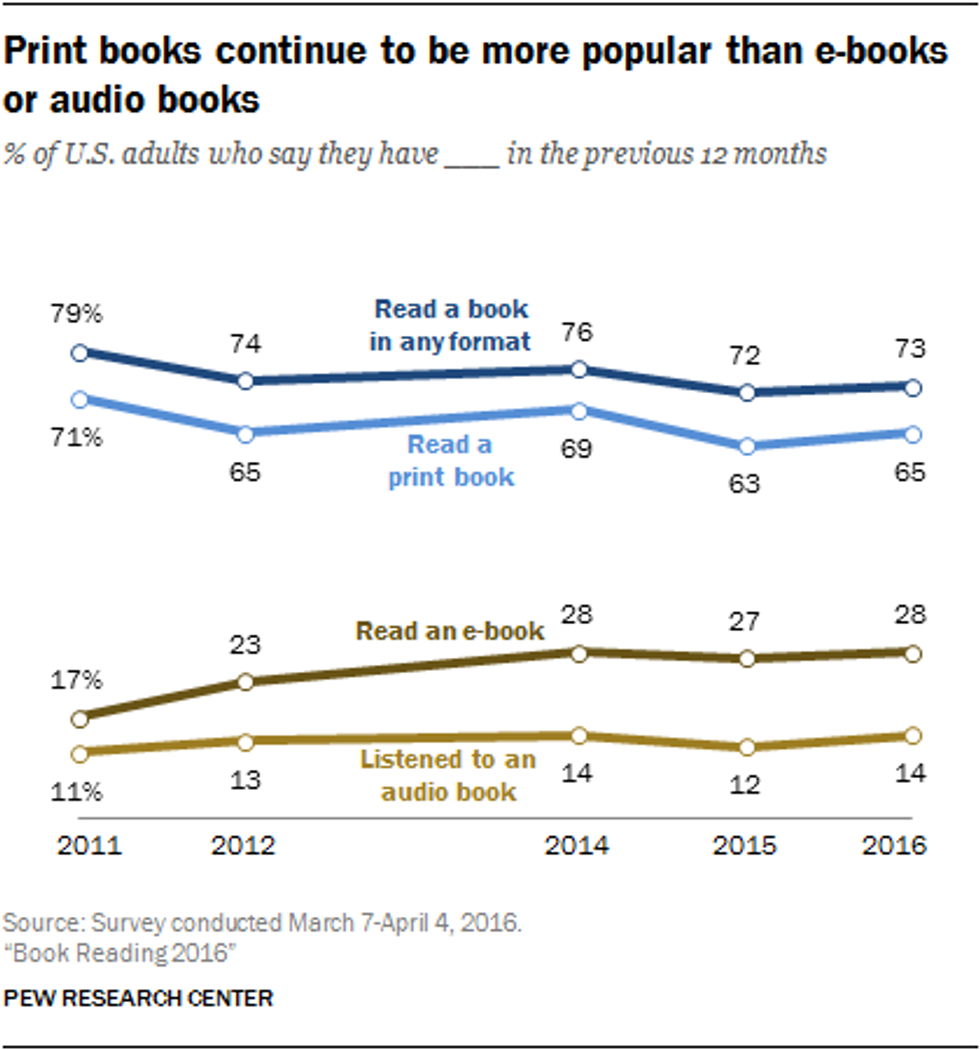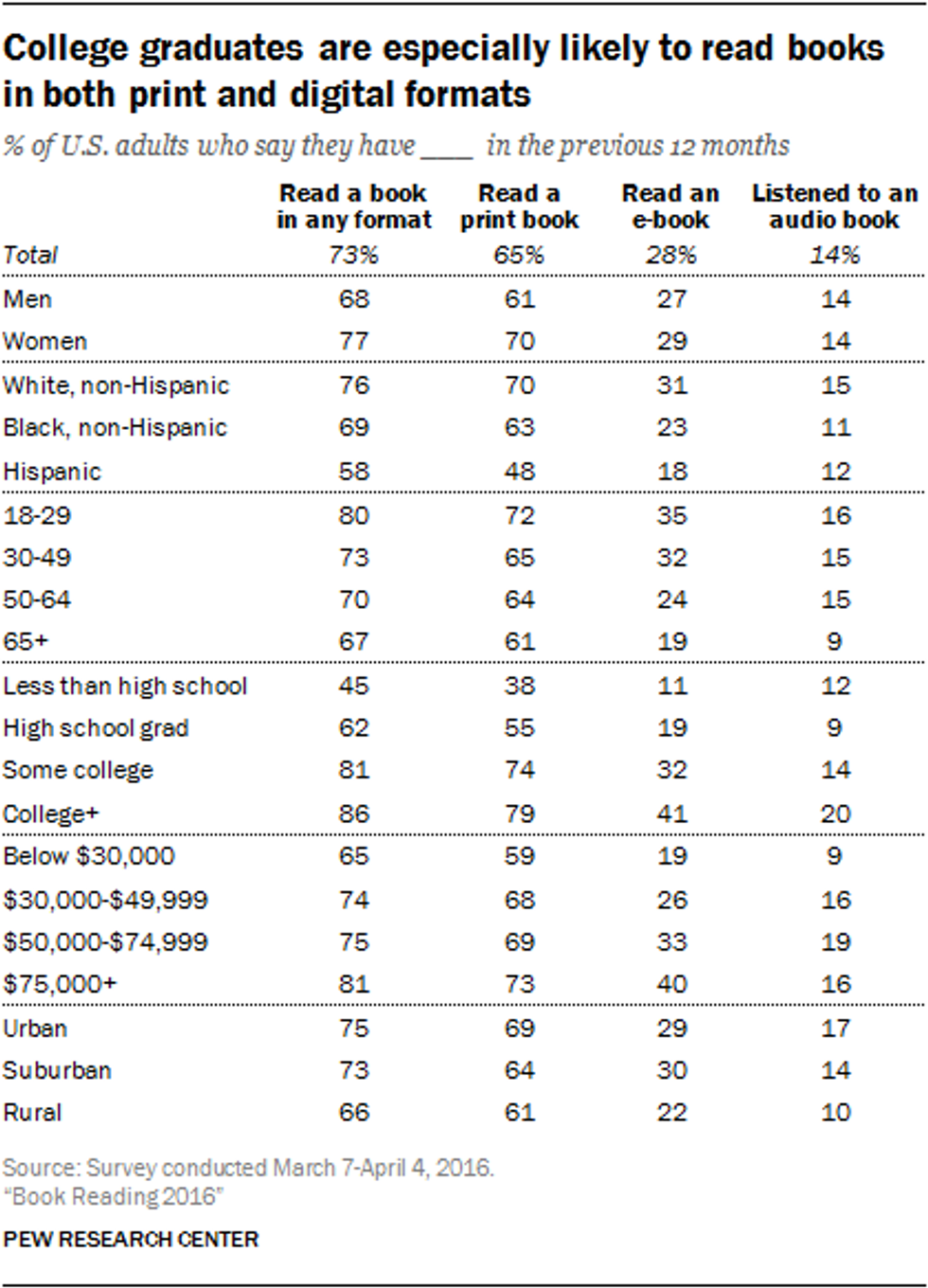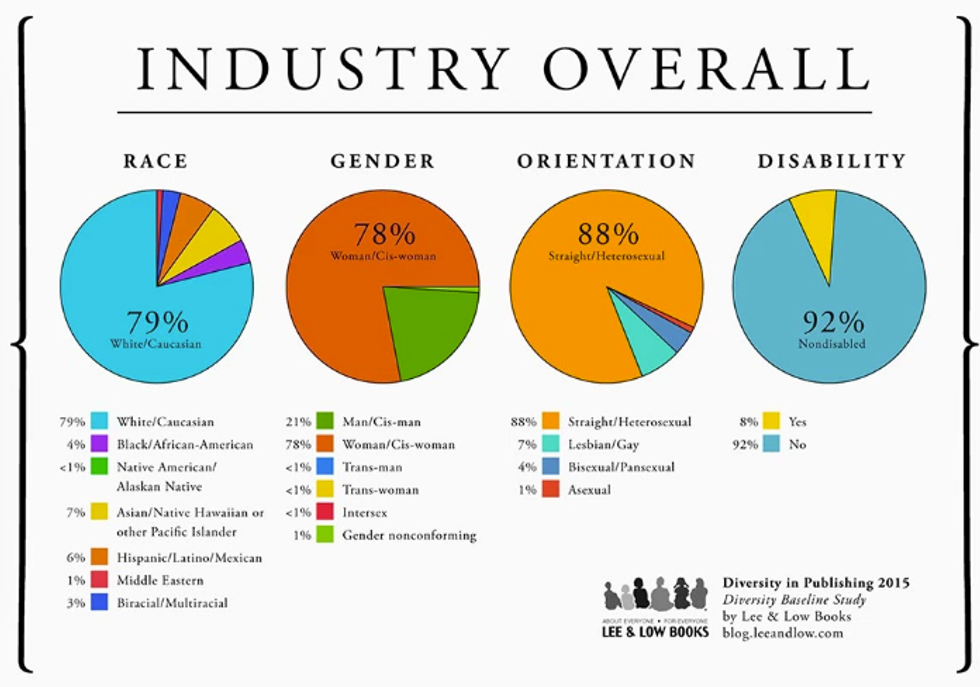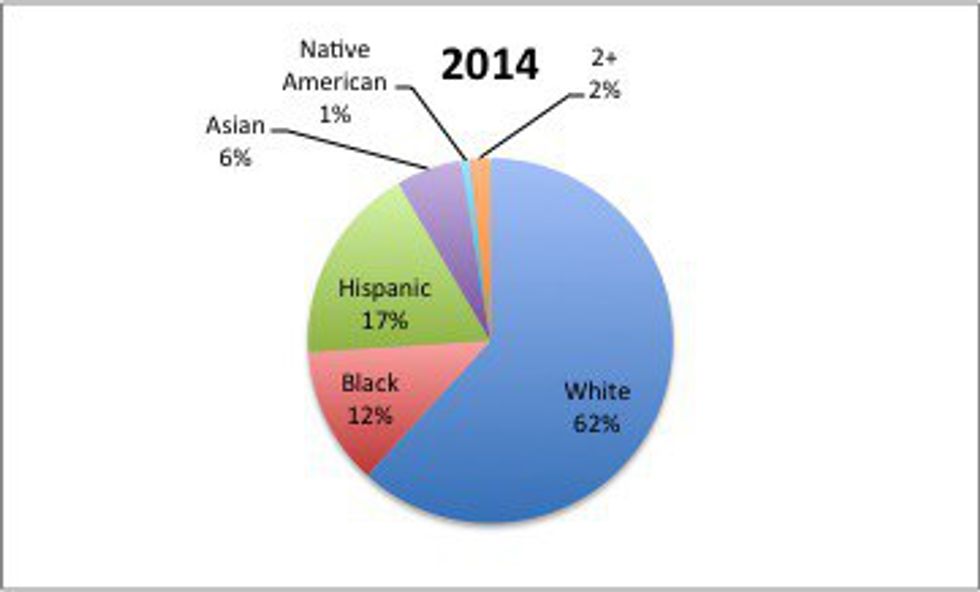" Books are going out of style!"
"I know, soon we won't have physical bookshelves anymore and our children won't understand what a real book is."
Not true!
Books: Here to Say
According to the Pew Research Center's newest article about books, people are reading print books, as in physical copies of literature more often than ebooks.

But all in all, those who have been scared for the publishing industry going out of business can relax a little. According to Pew, "The share of Americans who have read a book in the last year is largely unchanged since 2012; more Americans read print books than either read e-books or listen to audio books."
Loving the Books
Americans on average read about 12 books a year, which sounds super impressive, but the "typical" American alone has only read four books a year. If you're a student, you're probably ruining the curve since you have to generally read books for class. For example, as an English major, I had to read about 30 books in a semester for my literature classes in the spring. I definitely screwed up that curve, I'm sure.
However, all those books get expensive and the online versions (if available) are so much more delectable for college-kid wallets. College graduates seemed to be used to that online reading life, because they are four times more likely to read ebooks than non-college graduates. The reading life itself still carried over since they are also twice as likely to read print books than non-graduates.

A Comment about the Publishing Industry
Since I've brought education into the mix, that begs the question of who has the ability to like eBooks over print or vice versa, and that answer is the middle-to-upper class who have the education to know how to read and money to buy these books.
According to the pew research data, white, upper-class women are more likely to be reading books and thus they are more likely to be the target for the industry. Why would they be the ones reading more? Perhaps it's because the books being published are being distributed by predominantly white, upperclass women? Or perhaps these books are being published by these women because that's the target audience?
It's a toss up, but the fact remains: the publishing industry is, according to a 2015 Lee & Low Books Diversity Count, very white and very female.
What Does Our Nation Look Like?
From 2000 to 2014, our nation is changing and becoming more and more diverse. So why don't our books reflect that diversity?
This issue could be another article, but why books are popular is always going to beg the question who is buying books.
Pew including the education, race, and gender of these readers illustrated the fruits of a non-diverse publishing industry.
So keep reading, but diversify your choices and let the industry know that diverse books sell. Print books are not going out of style and neither should diverse books!
Wondering where to start? Here are some resources for finding some diverse books!
Goodreads' Listopia of Diversity: https://www.goodreads.com/list/tag/diversity
Diversity in YA: http://www.refinery29.com/2015/12/98691/most-diver...
New York Times' Diverse Children's Books: http://www.nytimes.com/2015/12/06/books/review/not...
***Also a final, friendly note to support your local book stores and buy print books there instead of Amazon! Unless you're super poor and need those cheaper options... then I won't judge.***
























